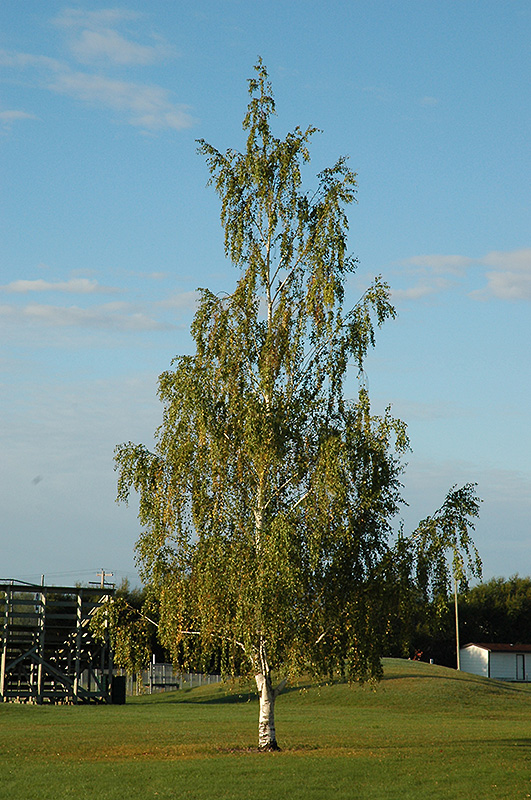Height: 40 feet
Spread: 25 feet
Sunlight:
![]()
![]()
Hardiness Zone: 2
Other Names: Betula p. Laciniata, Weeping Birch
Description:
The famous cutleaf weeping birch, features finely cut leaves and a very pronounced weeping habit of growth, one of the most popular accent trees of all time; keep it happy and stress-free to limit possible troubles with birch borers
Ornamental Features
The Cutleaf Weeping Birch is primarily valued in the landscape for its highly ornamental weeping form. It has dark green deciduous foliage. The deeply cut ferny leaves turn an outstanding yellow in the fall. The peeling white bark is extremely showy and adds significant winter interest.
Landscape Attributes
The Cutleaf Weeping Birch is an open deciduous tree with a rounded form and gracefully weeping branches. It lends an extremely fine and delicate texture to the landscape composition which can make it a great accent feature on this basis alone.
This tree will require occasional maintenance and upkeep, and should only be pruned in summer after the leaves have fully developed, as it may 'bleed' sap if pruned in late winter or early spring. Deer don't particularly care for this plant and will usually leave it alone in favor of tastier treats. Gardeners should be aware of the following characteristic(s) that may warrant special consideration;
- Insects
The Cutleaf Weeping Birch is recommended for the following landscape applications;
- Accent
- Vertical Accent
Planting & Growing
The Cutleaf Weeping Birch will grow to be about 40 feet tall at maturity, with a spread of 25 feet. It has a low canopy, and should not be planted underneath power lines. It grows at a fast rate, and under ideal conditions can be expected to live for 40 years or more.
This tree does best in full sun to partial shade. It prefers to grow in average to moist conditions, and shouldn't be allowed to dry out. It is not particular as to soil type or pH. It is somewhat tolerant of urban pollution. Consider applying a thick mulch around the root zone in winter to protect it in exposed locations or colder microclimates. This is a selected variety of a species not originally from North America.

